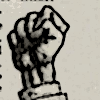An "Unsafe Hand Tool": The California Supreme Court Decision
Annotation
Beginning in 1972 lawyers representing farm workers petitioned the California Industrial Safety Board to prohibit the use of the short-handled hoe. Initially the Board rejected the workers' claims. Finally, the plaintiffs appealed the case to the California Supreme Court, which declared in April 1975 that the short-handled hoe was "an unsafe hand tool" that was banned by California law.
We hold that any hand tool which causes injury, immediate or cumulative, when used in the manner in which it was intended to be used may constitute an "unsafe hand tool" within the meaning of the regulation. If the short-handled hoe is so designed that it can be used by the worker only in a stooped posture that is dangerous to his health it could be found to be an "unsafe hand tool."
We must now determine the appropriate disposition of this case. Petitioners urge this court to prohibit all future use of the short-handled hoe, arguing that the present record establishes, as a matter of law, that the short-handled hoe is an "unsafe hand tool." Petitioners rely primarily on the fact that the medical evidence produced at the public hearings, detailing the significant back injuries resulting from the use of the short-handled hoe, was largely uncontradicted; given the causal connection between the short-handled hoe and back disabilities, petitioners contend that such a hoe is "unsafe" as a matter of law.
The determination of whether a tool is impermissibly "unsafe," however, involves more than a simple decision as to whether it causes some injuries; the heavy head of a traditional hammer, for example, may inevitably cause many sore thumbs but that in itself does not demonstrate that the hammer is unsafe. As noted above, section 6306, subdivision (a) . . . defines "safe" and "safety" as "such freedom from danger . . . as the nature of the employment reasonably permits" and section 6306, subdivision (b) . . . specifies that in determining the safeguards which an employer must adopt, the word "'safeguard' shall be given a broad interpretation so as to include any practicable method of mitigating or preventing a specific danger." On the instant record, this court cannot determine, as a matter of law, whether under these statutory standards the short-handled hoe is safe or not; that determination is properly a judgment to be made in the first instance by the respondent agency, applying the proper legal standard.
In sum, we conclude that the respondent agency erred in determining that it would be an "unreasonable extension of its authority" to find that the short-handled hoe is an "unsafe hand tool" within the meaning of title 8, section 3316 of the California Administrative Code.
Source
Carmona, et. al. v. Division of Industrial Safety, 13 Cal.3d 303 [SF. No. 23053. Supreme Court of California. January 13, 1975.]











